Shape Shifting by Nanette Carter | AURN
May 19, 2022 - AURN
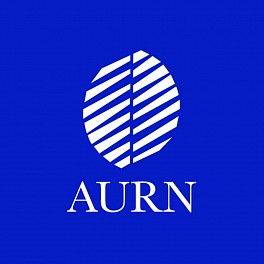
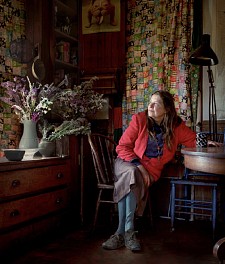
May 18, 2022

May 17, 2022 - Delaware Art Museum
Delaware Art Museum, Louisa du Pont Copeland Memorial Fund, partial gift from the artist, and purchased with funds donated by Doug Schaller and David Barquist, Brad Greenwood and Anne M. Lampe, 2022.

May 17, 2022 - GalleriesNow

May 14, 2022 - The Heckscher Museum of Art
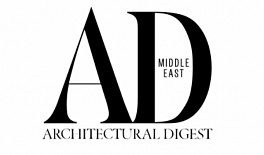
May 7, 2022 - Saiqa Ajmal for Architectural Digest Middle East
This Upper East Side Apartment Shows How To Decorate A Bedroom Of Dreams
Eric Winnick of E. Lawrence Design has curated a tailored yet comfortable space for a downsizing fifty-something couple
Photo: Reid Rolls
Tell us about a standout artwork.
There’s a piece in the bedroom by Long-Island-based artist Susan Vecsey which adds to the tranquility of the space. She’s known for paintings that evoke a sunrise type of setting, but in a very abstract way.
What’s your approach to using colour and pattern?
I like to use colour with restraint. My palettes tend to be very neutral with pops of colour. I’m drawn to cooler neutrals; I always feel the palette should be warm with touches of vibrancy. The walls throughout this space are a taupe that gives off a cloud like texture, which allows for statement artworks and a rug that grounds the living room and also serves as its own work of art. Continue Reading

May 7, 2022 - Thu Nhat Pham for The Hopkins Review
Jill Nathanson in conversation with Thu Nhat Pham, THR Editorial Assistant
Jill Nathanson, Light Wrestle, 2020, 45 1/2 x 95 1/2 inches. Private Collection.
How did the paintings [in the folio] come to be?
It’s hard to know where to start. I think abstract painting, for any serious painter, is a manifestation of a whole understanding of what painting is about and what abstract painting might do. The paintings manifest something about painting and about abstract painting: I’ll leave that to the side.
I’ll say that the paintings in the folio are painted with thick poured acrylic polymer paints, and they’re very transparent. All the paint is absolutely transparent, and it’s poured onto a wood panel that’s been prepared and painted white so that the light reflects off of it. This is a very unforgiving process: pouring thick plastic onto wood and letting it dry and then pouring more thick transparent plastic on top of it. There’s no room for a mistakes or corrections really.
And so, I worked from studies. I worked from transparent plastic studies, which take me a very long time to create. So, a lot of the creative process goes on a small scale and the paintings are enlarged versions of these color studies. There are certain things that I want each color study to accomplish visually, and I want that visual experience to call forth all kinds of other intellectual, emotional, spiritual kinds of responses. But it all really starts with a small six by nine inch plastic study.
Really, it also goes back to discoveries that I made when I was an undergraduate at Bennington College. I discovered what was then a really important art movement: Color Field painting. I fell in love with it, and I was encouraged to be experimental. I experimented with acrylic paint and discovered that I just loved thick transparent color and that working with thick transparent colors, sometimes in relationship to opaque color, I felt that I could make discoveries that I hadn’t seen anybody else work with.
A lot of my life as a painter, over almost 50 years, has been about pure color relationships, color in fields, transparency, and materiality.
So that’s sort of an intro to how things get going.
What are the oppositions that you try to balance in your painting process?
What are the oppositions that I try to balance in my painting process? You initially asked me if there were three words that I could choose to describe my painting process and my approach to painting. I kind of bristled or pulled back from that because I don’t think that there are descriptive words that I’d like to use. I feel like there are challenges or oppositions that my painting is involved with and that my whole painting life has been involved with trying to engage.
One of them would be “Shape Versus Field.” This probably sounds very meaningless and like “what’s the difference between shape and field?” But, in fact, it has a very important position in the history of abstraction and particularly abstraction over the last, say 50 years. At a certain point in high modernism in America there was a quality of field in painting that was very important, I would say, from Mark Rothko, Barnett Newman, Jackson Pollock. And then into the pure color painting of color field painters, there was a sense of the painting as being kind of a field of energy or maybe opposing energies or moving energies. But it was kind of anti-shape. It was polyphonic painting where every part of the surface was equally important. It became kind of allover painting (that’s one way to talk about it). But I would say painting as a field that transmits a kind of energy was very important in high modernism.
Then that really fell out of fashion.
Now, some of my favorite painters, let’s say Amy Sillman who is a very wonderful contemporary painter, are very focused on shape and discovering new ways of thinking about shape: shape that’s flat, shape that kind of pushes and pulls in space, etcetera. There’s kind of been a re-emergence of a focus on shape. And I love a lot of that painting. It’s so exciting to me. I think it’s a wonderful moment in abstract painting. There are so many people I could mention who were involved with creating a new feeling of shape, kind of funky, a little bit troubling, a little bit awkward, kind of anti-heroic. I love this painting, but I would say that for me: I’m involved with kind of negotiating that opposition between field and shape and not having one take over from the other. So, “Field and Shape,” and when I say “Field,” I mean color as an energy field, and how do you have an energy field that also has a shape. They don’t really work together, but that’s kind of the ambition and the process and the way of thinking or hoping or approaching a painting or the story I tell myself about what I’m doing. Whether it’s overstated or not, that’s how I talk about it to myself.
Another one is “Color as light / color as matter.” Paint color has two realities. It’s gloppy, expensive stuff you get in jars or tubes or whatever. You mix it and it’s totally material. It’s glop but it’s also light. You put colors together, they vibrate, and you have a quality of light that you can create in a painting. The opposition between those two things, I think, is so key to the magic of painting throughout history and really is a focus of abstract painting. How do you find your way to really give that experience of the material of paint, simultaneously the light quality of paint, and simultaneously the object of a painting, which is a big, heavy thing that’s stuck on a wall. It costs money and takes up space, and it’s very, very material, and how do you have it feel like it is this transcendent light kind of a thing at the same time as you’re not making an illusion? So, that material light thing is a big biggie for me.
A third opposition that I was thinking about: a range of abstract painting as an image because everything, every painting, has an image, and abstract painting as a process of looking, a kind of meditation. I think every painting that’s worth its salt is both: there’s an image that you look at (“Oh yeah! I see that image, I like that image!”), but it’s also a process that engages you in putting it together, as in time with your optical nerves or muscles or whatever works in your eyes, which I don’t really know that much about. It’s a process and it’s also an image.
So those are the things: “Shape versus Field,” “Color in paint versus Material in paint,” and “Image versus Process.” They’re all kind of interrelated, but I think it’s worth it to kind of tease them out.
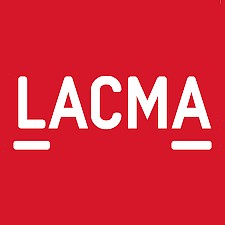
May 6, 2022 - Los Angeles County Museum of Art
Frederick J. Brown: Acquired by the Los Angeles County Museum of Art
Frederick J. Brown
Dr. Leon Banks (Study for Last Supper), 1982
Oil on linen
32 x 24 1/4 inches
Signed, dated and titled on verso
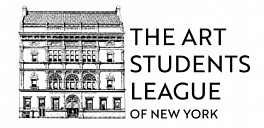
May 6, 2022 - The Art Students League

May 6, 2022 - Architecture Sarasota